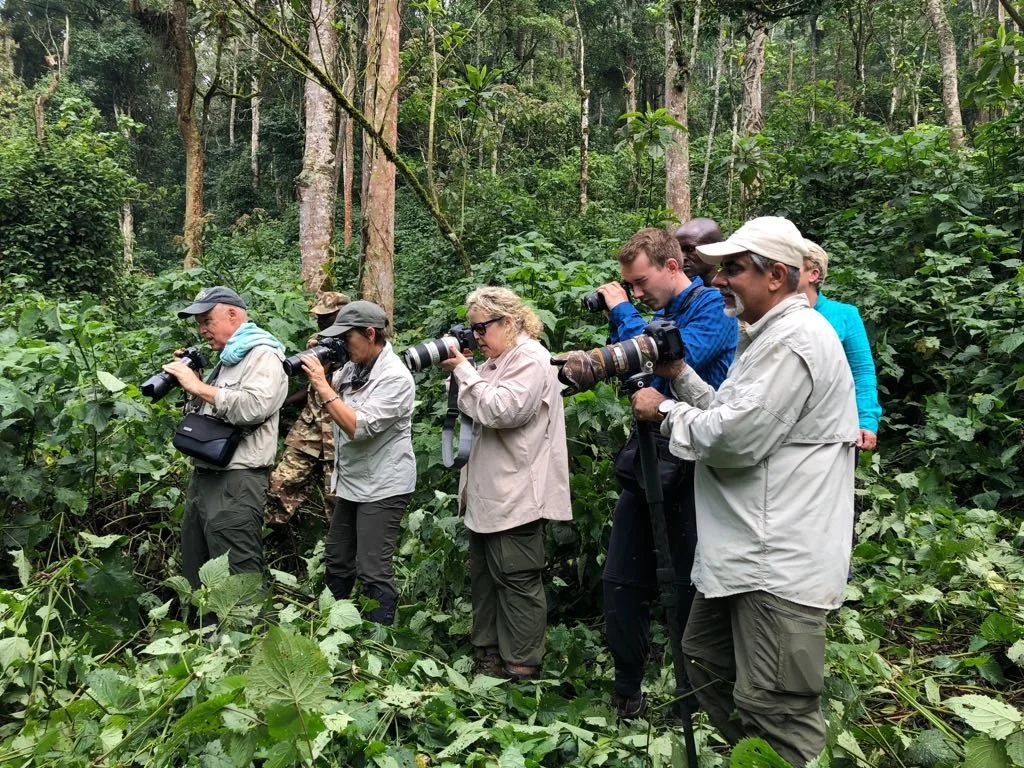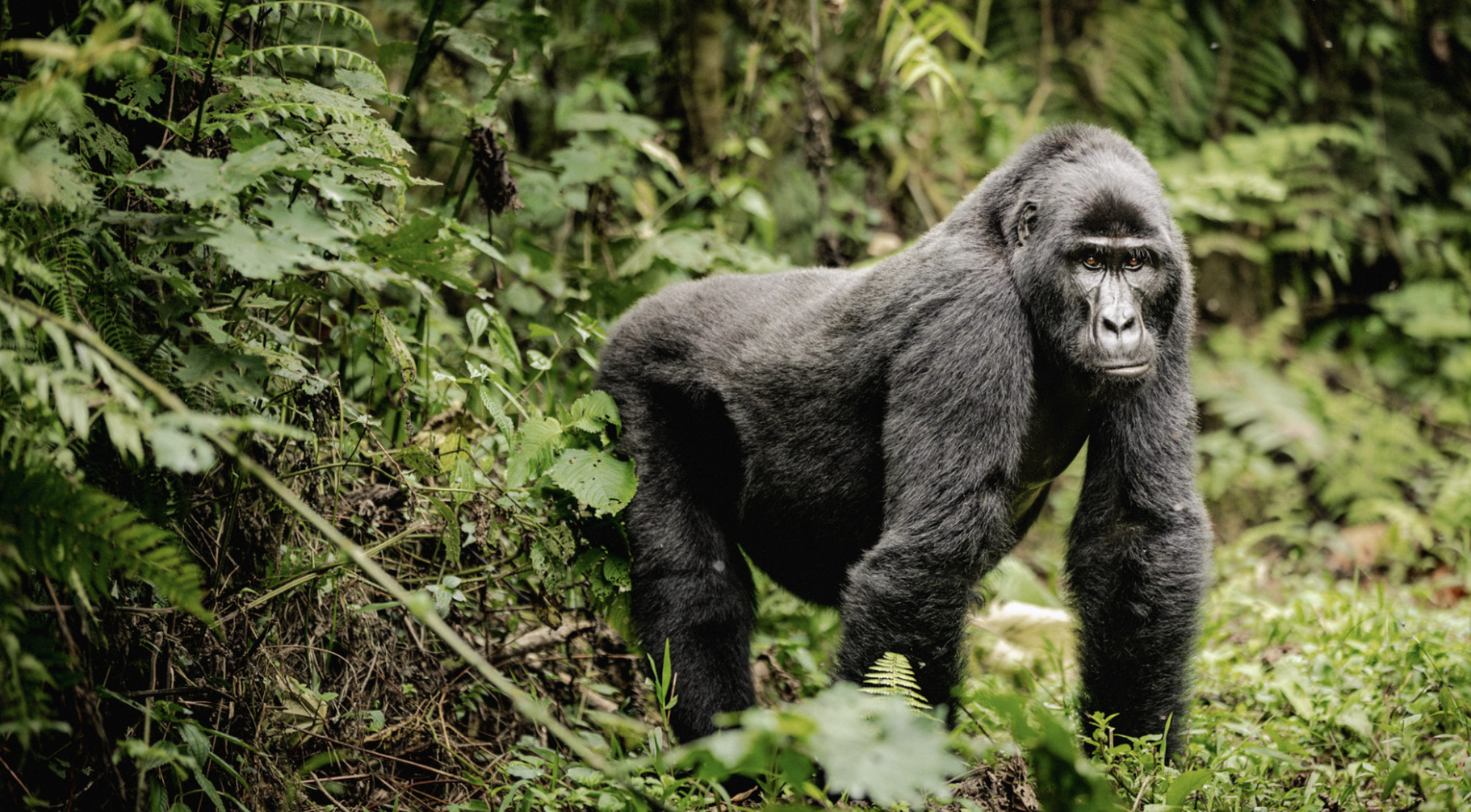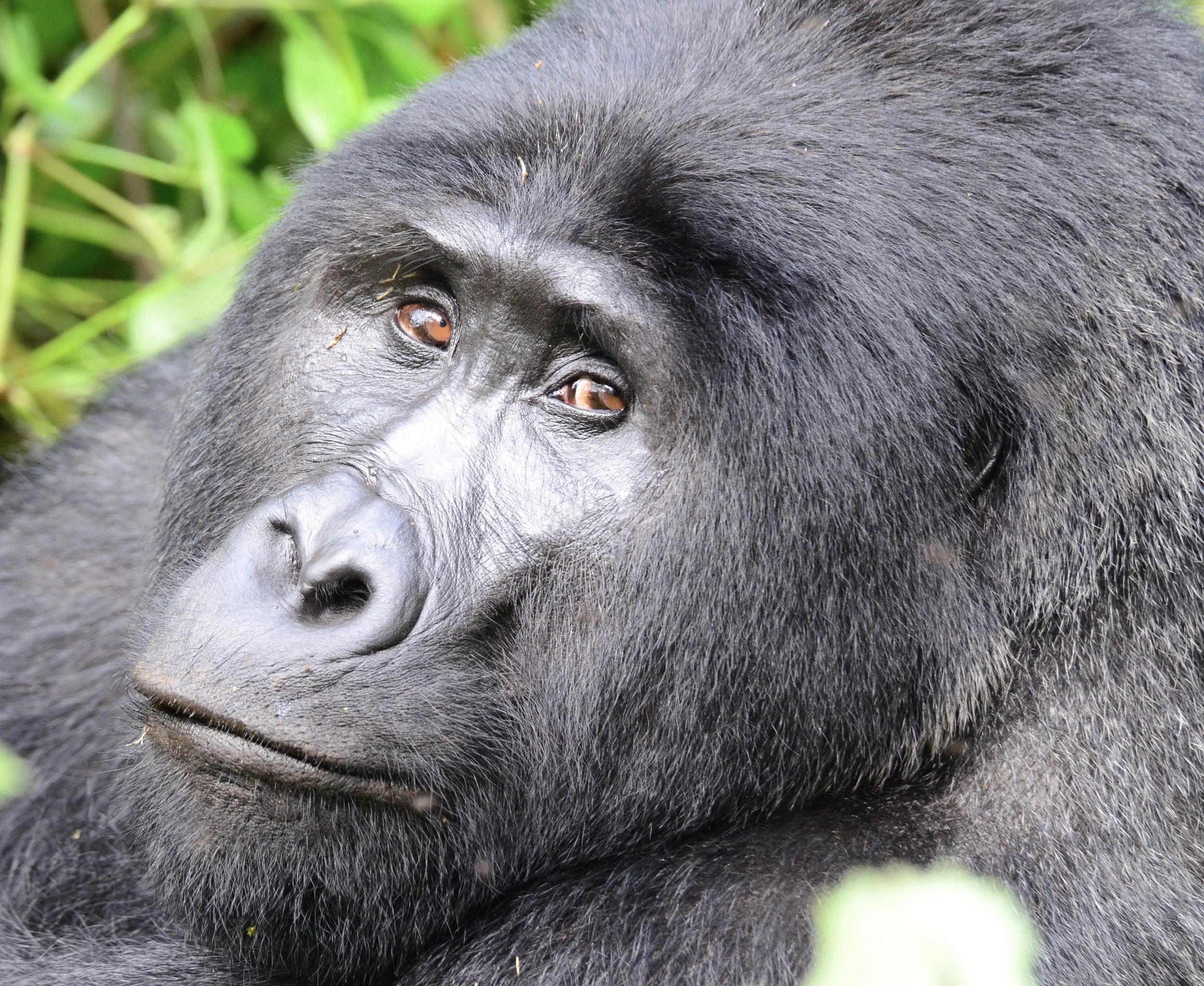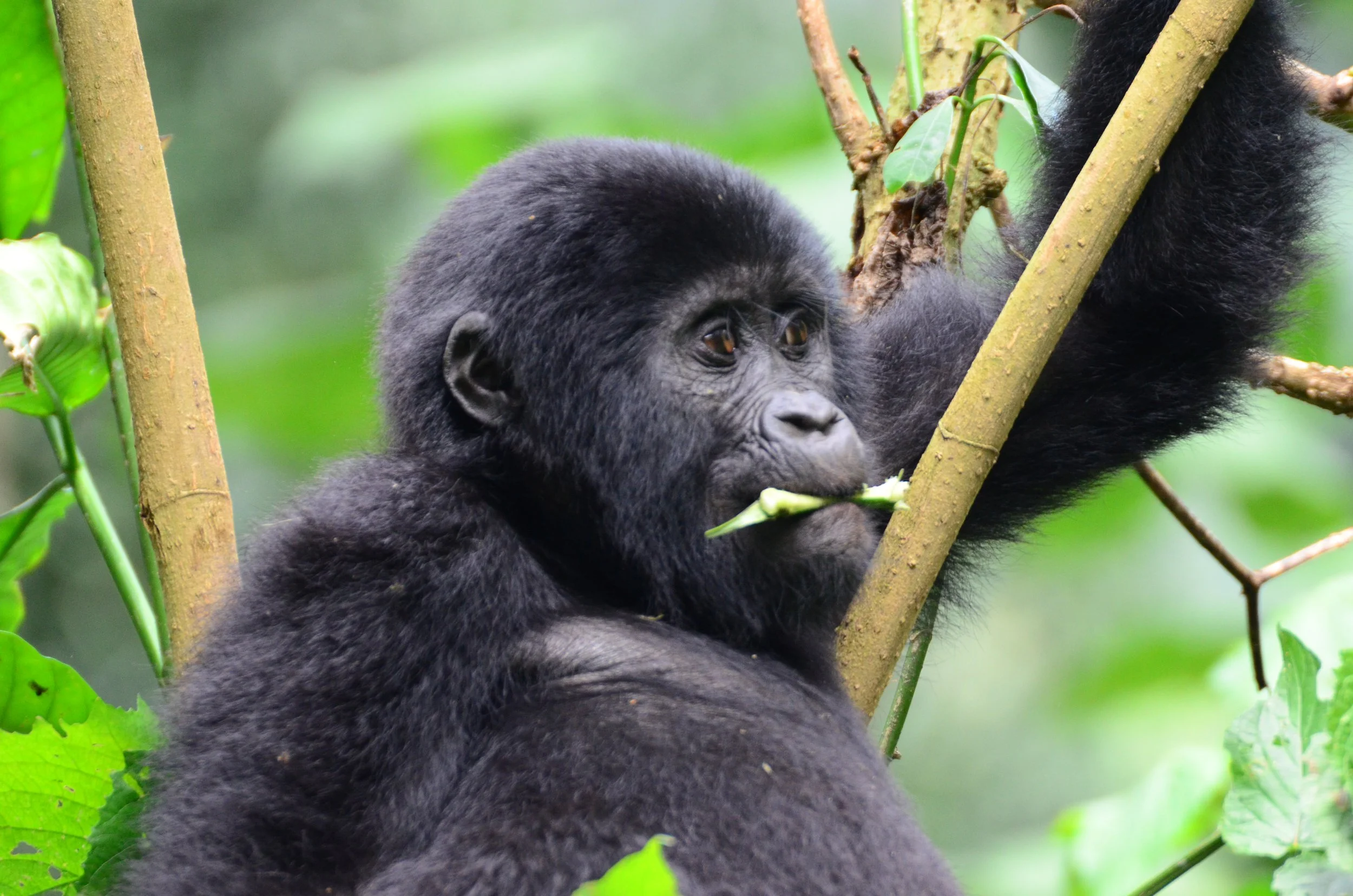Gorilla Trekking Photography Tips and Tricks
A Guide to Gorilla Photo Safaris
There are few moments in life as humbling, or as awe-inspiring, as standing just a few feet away from a family of wild mountain gorillas. Deep in the emerald forests of Uganda and Rwanda, time seems to slow. You hear the soft rustle of leaves, the deep, rumbling vocalizations between family members, and the occasional curious glance from a young gorilla who might be just as intrigued by you as you are by them.
For wildlife enthusiasts and photographers alike, this is the holy grail of encounters, a chance to witness these gentle giants living out their quiet, dignified lives and to capture moments that will forever bridge the wild world and our own. Their human-like expressions, tender interactions, and sheer presence make them unforgettable subjects for any lens.
If you’re dreaming of a gorilla trekking photo safari, here’s how to make it everything you’ve imagined, and more
Where are the best places to go on a gorilla photo safari
The ancient, tangled rainforests of East Africa are home to the last remaining mountain gorillas on Earth. Uganda and Rwanda offer the most rewarding, and often life-changing, opportunities for photographers.
Bwindi Impenetrable National Park, Uganda
Holding nearly half the world’s mountain gorilla population, Bwindi is a UNESCO World Heritage treasure. Its mist-cloaked hillsides and thick jungle canopies create a moody, almost mystical backdrop for your photographs. Every trek here feels like stepping into a living, breathing wildlife documentary.
Mgahinga Gorilla National Park, Uganda
Smaller but equally spectacular, Mgahinga offers stunning views of the Virunga Volcanoes as your backdrop. Imagine a silverback framed by a dramatic skyline of peaks—nature’s perfect composition.
Volcanoes National Park, Rwanda
Famed for the groundbreaking research of Dian Fossey, this park offers slightly easier trekking thanks to its more open vegetation. Here, photography can be more straightforward—yet no less enchanting—thanks to clear lines of sight and softer forest light.
While each destination has its own magic, serious photographers often favor Bwindi for its diversity of habitats and larger gorilla families, offering more variety in both behavior and backdrops.
Find out more about where to see gorillas in Africa.
The best time of year to go on a gorilla trekking photo safari
Gorilla trekking is possible year-round, but timing can enhance your photographic opportunities.
Dry Seasons (June–August & December–February)
These months bring easier hiking conditions—a blessing when you’re carrying camera gear—and often clearer skies for natural lighting. Gorilla tracking is generally smoother, with paths less slippery and sightings more predictable.
Rainy Seasons (March–May & September–November)
The rains bring lush, vibrant vegetation, perfect for deep green, high-contrast shots. Add in mist swirling through the trees or a silverback’s fur glistening with raindrops, and you’ve got the makings of dramatic, atmospheric images. You’ll just need to protect your gear from the elements and be ready for more challenging treks.
No matter when you go, mountain weather can change quickly, so packing for both sun and rain is essential.
The densely forested slopes of Bwindi Impenetrable Forest in Uganda
Gorilla Photo Safari Equipment
What camera lens is best for gorilla trekking
Before we look into some lens recommendations, it’s essential to mention that you don’t want to carry too much weight when you’re trekking the forests for hours. Consider carefully what equipment is most versatile and worth packing, and what you could live without.
Some good lenses to pack in your kit:
70-200mm/2.8 zoom lens – an excellent all-round choice which offers versatility for a gorilla photo safari. It is great for capturing both wider shots and tighter close-ups.
24-70mm/2.8 zoom lens – occasionally, gorillas get curious and may come quite close. This is one of the best lenses for gorilla trekking and is great for capturing these close moments with a wider field of view.
100-400mm zoom lens – recommended for distant subjects, but less useful in a very dense forest setting. Birding enthusiasts may need the extra zoom, but for most gorilla treks this will be more lens than needed.
Tripods are usually not allowed, but a monopod can help with stability.
Dense foliage and low light conditions can make gorilla photography challenging.
What camera settings are best for gorilla trekking
When you’re in the thick foliage of the forest, lighting conditions can be challenging. Generally, the following settings can be a good starting point:
ISO: Start at ISO 800-1600, but you may likely need to go even higher in darker forest conditions.
Aperture: Wide apertures are recommended to let in more light and create a shallower depth of field, which helps the gorillas stand out from the background.
Shutter speed: Moving targets like gorillas are best captured at 1/250s to allow you to clearly capture their movements. If they’re really busy, you can increase this.
Shooting mode: Aperture Priority is highly recommended, as you can still control the depth of field while the camera handles the shutter speed.
Focus: Continuous autofocus (AF-C) is recommended. Back-button focussing can also allow you more control.
Metering: In forest environments, spot metering or center-weighted metering can be helpful.
File Format: Shooting in RAW allows you much more flexibility in post-production.
Handy photography tips for gorilla trekking
When composing your photos while gorilla trekking, some handy tips include:
Get low to the ground so you’re at eye level with gorillas. This makes them appear larger in the frame but also helps separate them from the background.
Gorillas have immensely expressive eyes that convey a range of emotions. Use single-point autofocus to get a crisp focus on the eyes.
Capture those moments of interaction. What makes gorillas such incredible subjects is their similarity to us in terms of their relationships. Try to snap those moments between mothers and their babies, young gorillas playing, or those peaceful moments where they’re simply eating or grooming.
Dense forest foliage can make your shots more challenging, but it can also be used to frame your subjects. Similarly, while low-light conditions can be tricky, those magical shafts of light can take your photos to a new level.
Always listen to your guide and maintain a safe distance from the gorillas.
Who are Gorilla Trekking Photo Safaris for?
Gorilla safaris are for absolutely anyone of a reasonable level of fitness. Trekking can be quite strenuous and can involve hiking for between 2 and 6 hours, so it’s advised to prepare before your trip with a few hikes and walks.
Because gorilla trekking is a physically demanding activity, children under the age of 15 are not permitted. Trekking groups are limited to 8 people to ensure the gorillas aren’t impacted by large crowds and to allow guests to be in the moment and not have to jostle for a view.
How experienced should you be to go on a Gorilla Trekking Photo safari?
Gorilla trekking photo safaris are not just for professional photographers. Amateurs can participate and even learn from more experienced trekkers on the trip. If you’re new to photography, familiarise yourself with your camera before your trip. You don’t want to miss out on incredible encounters with gorillas while you fiddle with your camera.
Final thoughts
A gorilla trekking photo safari is a soul-stirring experience that will create lasting memories of your close encounter with these remarkable creatures.
If you’re considering your dream gorilla trekking safari, contact us today to begin planning your trip, which will be tailored to your needs.





